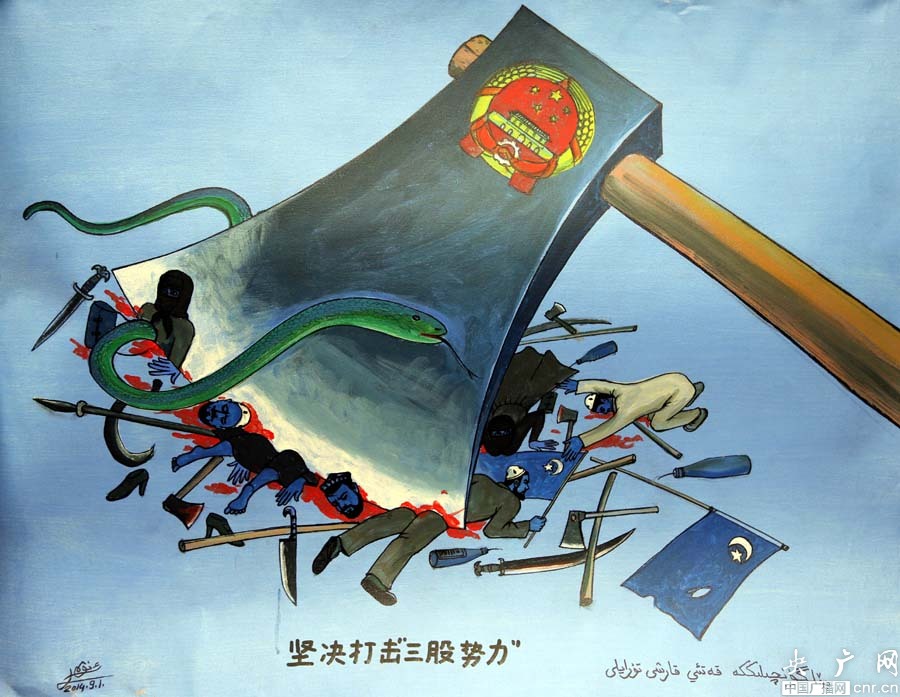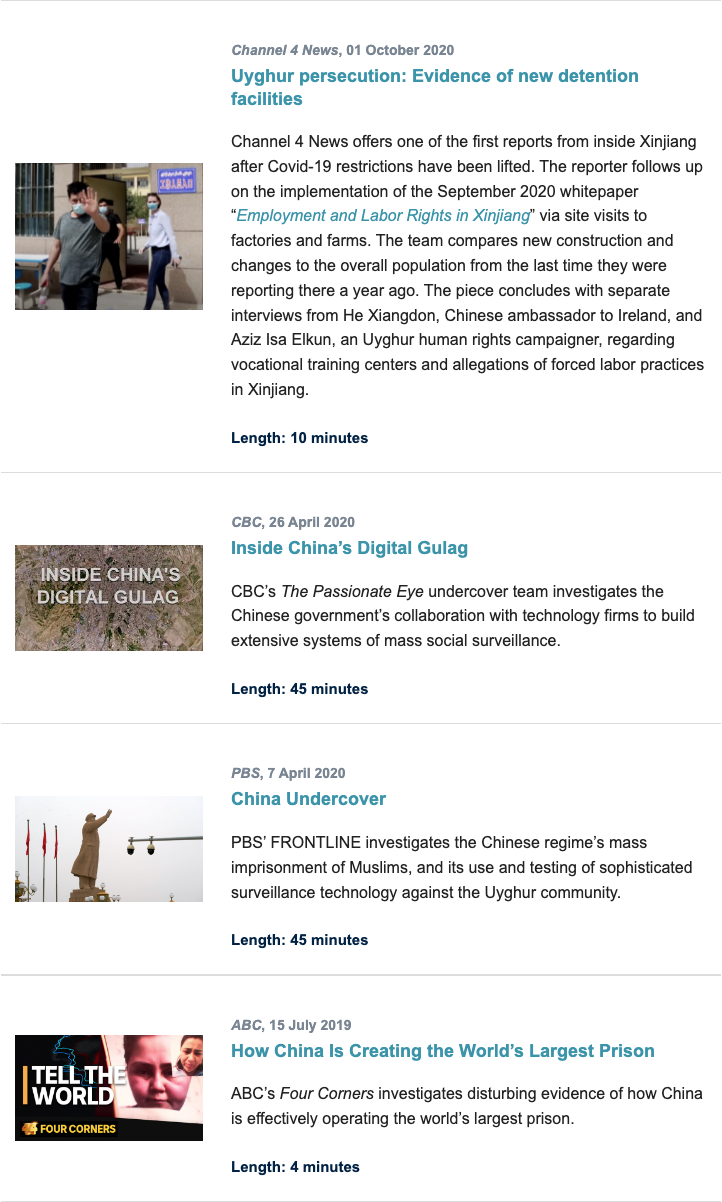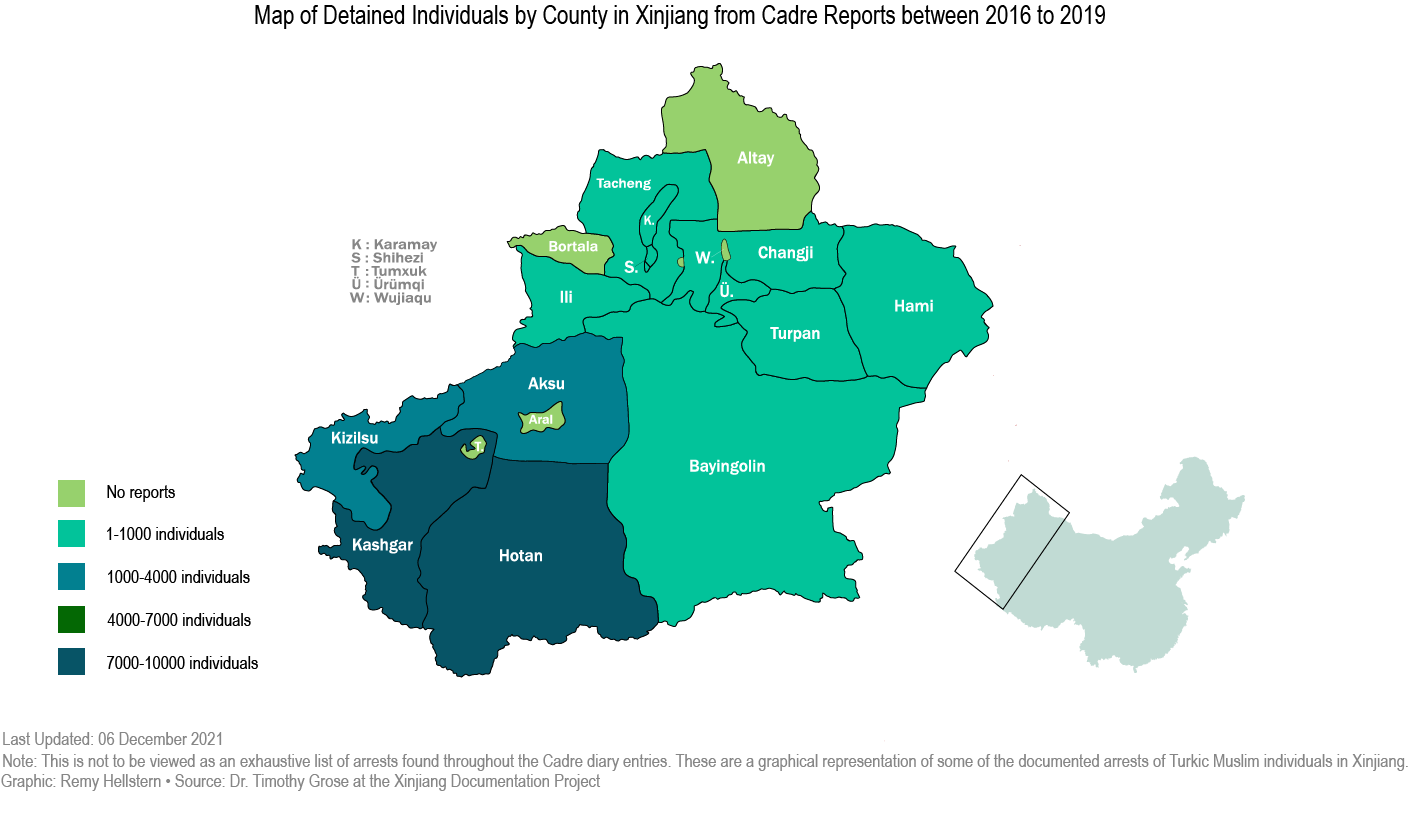
The Xinjiang Documentation Project (XDP) is a multidisciplinary collaborative project based at the Institute of Asian Research in the School of Public Policy and Global Affairs at the University of British Columbia and cosponsored by the Department of Gender, Sexuality, and Women’s Studies and the School for International Studies at Simon Fraser University. The XDP collects, assesses, preserves, and makes available documentary information on the state policies and experiences of extrajudicial detention of Uyghurs, Kazakhs, and other ethnic groups in Xinjiang Uyghur Autonomous Region, northwestern China. The project’s priorities are to evaluate and disseminate reliable documents for the general public, giving a platform for individuals to share their lived experiences, providing regular updates on developments in the region, and organizing periodic speaker events. The XDP is also an effort to document the experiences and memories of those in Xinjiang for future truth and reconciliation work. Such documentation is vital for the survival of colonized societies.
Background
Researchers estimate that over one million people have been detained in over 380 vocational education and training centers throughout Xinjiang.1 An estimated one million Turkic Muslims, primarily Uyghurs, Huis, and Kazakhs, have been separated from friends, family, and loved ones for the sake of re-education, according to the Chinese Communist Party (CCP). Since the official formation of the Xinjiang Uyghur Autonomous Region in 1955, a tense relationship has existed between the government and Turkic Muslim groups in the region.2 Leadership in the People’s Republic of China (PRC) justifies the existence of these vocational training centers as part of the country’s fight against terrorism. Officials argue these vocational training centers offer re-education and opportunities for otherwise dangerous individuals.3
However, many scholars dispute these claims, maintaining that vocational training centers are state-run detention facilities. This system has drawn widespread criticism from governing bodies and human rights groups for detaining people due to their ethnic identity and religious beliefs. News outlets and testimonies have raised concerns about these centers as sites of sexual violence,4 torture,5 and expansive surveillance.6 In 2019, the PRC reaffirmed its stance on the proliferation of these camps in a government-issued white paper titled “The Fight against Terrorism and Extremism and Human Rights Protection in Xinjiang.” As more governments and institutions begin to recognize the human rights concerns in the region, reliable documentation of the ongoing situation is critical due to the scope of these activities, the fear experienced by those affected, and the state-directed erasure of evidence.


Resources for Teachers and Students
The XDP is intended for use as a resource for academics, teachers, students, and scholars to engage with literature surrounding the historical and current treatment of ethnic minorities in Xinjiang. The XDP web portal is divided into eight major sections: teaching, timelines, glossary, Chinese sources, critical scholarship, translations, lived experiences, and resources.
The XDP web portal is multifunctional and provides resources for instructors seeking to add materials related to Xinjiang’s detention and surveillance system to their university or advanced secondary classes. Connecting instructors to dependable material covering an array of topics related to Xinjiang is critical to the project’s broader knowledge dissemination goals. Some sections, such as the collection of syllabi shared with the XDP by scholars already teaching current events in Xinjiang, are specifically designed for use in the classroom. Others, such as the project’s timelines and glossary, can be used to give shape to and inform original lectures and lesson plans. Additionally, some sections also feature English-language sources and multimedia that can be incorporated into assignments for students.
For Teachers
The teaching section contains a collection of resources specifically designed for instructors to implement in the classroom. It draws on materials from colleagues who are teaching on Xinjiang and related topics, as well as materials compiled by the XDP. It features several sections, including syllabi and teaching plans, infographics, and visual materials. Syllabi and teaching plans have been shared with the XDP by experts on ethnic politics, anthropology, and the history of China and Xinjiang. Thre infographics section condenses and explains complex information such as official forms and maps. The section on visual materials presents and contextualizes evocative images such as propaganda and popular artwork, which contribute to the development of engaging lectures and student assignments. This section also showcases an array of media sources, including art projects, documentaries, journalism, and podcasts on topics surrounding re-education camps, escalations in surveillance and security measures in Xinjiang, international responses, and other developments in the region. Taken as a whole, the section offers a repository of readings, activities, learning objectives, and engaging teaching tools useful for instructors teaching in a wide array of disciplines. They can be found here: https://tinyurl.com/2am8w9hx.
The timelines section presents visual chronologies of the events that have shaped the politics of China’s northwestern region, with special attention to the actions that led up to the construction of the re-education camps and mass extrajudicial detention of ethnic minorities. Currently, there are six major timelines: “Historical Overview of Events Shaping the Politics of Xinjiang,” “Major Events Preceding the Construction of Reeducation Camps,” “Intellectual and Celebrity Arrests,” “Forced Labor and Detainment Transfer Timeline,” “Cultural Destruction Timeline” and “Official PRC Responses to Human Rights Violations.” Because they concern ongoing events often marked by conflicting accounts, these timelines are an indispensable tool for instructors as they work to assemble a coherent narrative for their teaching. Taken together or separately, they help instructors communicate and make sense of a complex historical issues to students at a variety of levels. The XDP will continue adding more information to the existing timelines and gathering information to create new ones. They can be found here: https://tinyurl.com/4p8r59ww.
The glossary includes a brief overview of key terms and definitions that figure prominently in the research of pro-CCP academics and Chinese government policy documents. Spanning concepts, campaigns, and common phrases, it provides nonexpert readers with the necessary contextual information to better understand the Chinese-language discourse about detentions, forced labor, and other policies concerning governance in Xinjiang. Most entries in the glossary feature a definition, an etymology, and a guide to pronunciation, and many also contain links to relevant articles, documents, or news stories. Like the timelines, this glossary is a useful tool for instructors to contextualize the web portal resources they implement in their teaching. Whether they are assembling lectures from the timelines or assigning primary sources for analytical essays, this comprehensive index will help instructors and their students navigate the complex and often-interconnected discourse that undergirds the events in Xinjiang. The XDP is committed to adding new terms and building on existing definitions as this discourse evolves. It can be found here: https://tinyurl.com/3ft6s7y8.
The Xinjiang Documentation Project is an ever-expanding repository seeking to collate, assess, and disseminate reliable information regarding developments in the region.
The critical scholarship section contains collections of English-language scholarship, as well as critical policy and human rights reports. Of particular interest to instructors wishing to bring current events in Xinjiang into the classroom is the XDP’s collection of academic work on the region. As an up-to-date bibliography of books and peer-reviewed articles, some of which are open-access, this section serves two purposes: instructors can gain a better understanding of specific topics to supplement their development of lectures and lesson plans, and they have access to a collection of relevant academic publications to assign to their students. This scholarship can be found here: https://tinyurl.com/w5u878p4.
For instructors teaching in Chinese, there is also a page of translations. This section features a curated list of translated English-language publications relating to the events in Xinjiang. These articles and news stories concern the events in Xinjiang and may be of interest to Chinese-speaking audiences unfamiliar with English-language writing on the subject. The XDP’s collection of translations can be found here: https://tinyurl.com/ft55z85t.
Lastly, the resources section connects interested students and teachers to a range of external databases, bibliographies, and other research projects. Given the scope and complexity of the situation in Xinjiang, there is an array of initiatives working to shed light on the ongoing human rights crisis. This section introduces viewers to other projects and highlights their work. These links can be found here: https://tinyurl.com/3tubajwf.
For Students
While the academic publications found in critical scholarship may be most useful for instructors as they incorporate current events in Xinjiang into their teaching, critical policy and human rights reports found in this section may be of particular interest to students. When read alongside the government documents found in the Chinese sources section, these reports can help students build an understanding of the contradictory narratives surrounding the escalating tensions in Xinjiang. They may also be incorporated into a variety of assignments and learning objectives, including how to think about sources critically and how to work with sources that tell opposing stories. While many primary sources are only available in the original Chinese language, the XDP is working to translate some into English to make them accessible for a wider audience. They can be found at https://tinyurl.com/w5u878p4 and https://tinyurl.com/27p84je6.
The lived experiences collection shares stories of Uyghur, Kazakh, and other ethnic groups before and during Chinese state repression. This collection provides an opportunity for individuals from Xinjiang to discuss what it is like on the ground. The XDP has emphasized the importance of presenting diverse perspectives and works to humanize the experiences of all people in the region. The lived experiences section collates all voices, from police officers to students to camp survivors, in order to highlight different experiences and work to best understand the ever-evolving situation in Xinjiang.
In the classroom, these sources will help students visualize and engage more directly with the human cost of these extrajudicial detentions. The personal stories and experiences that characterize these sources offer a counterpoint to the top-down government documents and policy reports. In this way, the section highlights the structural violence and historical trauma experienced by individuals living in the region. It can be found here: https://tinyurl.com/235v5mx6.
Call for Contributions
Developments in Xinjiang have raised profound concerns worldwide centered around the implementation of forced labor practices and establishment of involuntary vocational training centers that appear to target Muslim populations in the region. The Xinjiang Documentation Project is an ever-expanding repository seeking to collate, assess, and disseminate reliable information regarding developments in the region. XDP’s goal is to provide materials that teachers can copy and use in their current classes or examples they can consult in developing new class material. The project works to provide reliable, up-to-date documentation from a range of perspectives to encourage informed conversation around issues related to Xinjiang. If you are interested in contributing any documentation or related materials, please email xinjiang.documentation@ubc.ca.
NOTES
1. Darren Byler, “Living in a Ghost World,” New Internationalist 522 (2019): 26–30.
2. David Tobin, Securing China’s Northwest Frontier: Identity and Insecurity in Xinjiang (Cambridge: Cambridge University Press, 2020).
3. Matthew P. Robertson, “Counterterrorism or Cultural Genocide?” Made in China Journal, June 12, 2020, https://tinyurl.com/px8r6zmr.
4. Matthew Hill, David Campanale, and Joel Gunter, “‘Their Goal Is to Destroy Everyone’: Uighur Camp Detainees Allege Systematic Rape,” BBC, February 2, 2021, https://tinyurl.com/yv5bre6a.
5. Maya Wang, “China’s Campaign of Repression Against Xinjiang’s Muslims,” Human Rights Watch, September 9, 2018, https://tinyurl.com/kxy6phez.
6. Isobel Cockerell, “Inside China’s Massive Surveillance Operation,” Wired, May 9, 2019, https://tinyurl.com/234c9k43.

